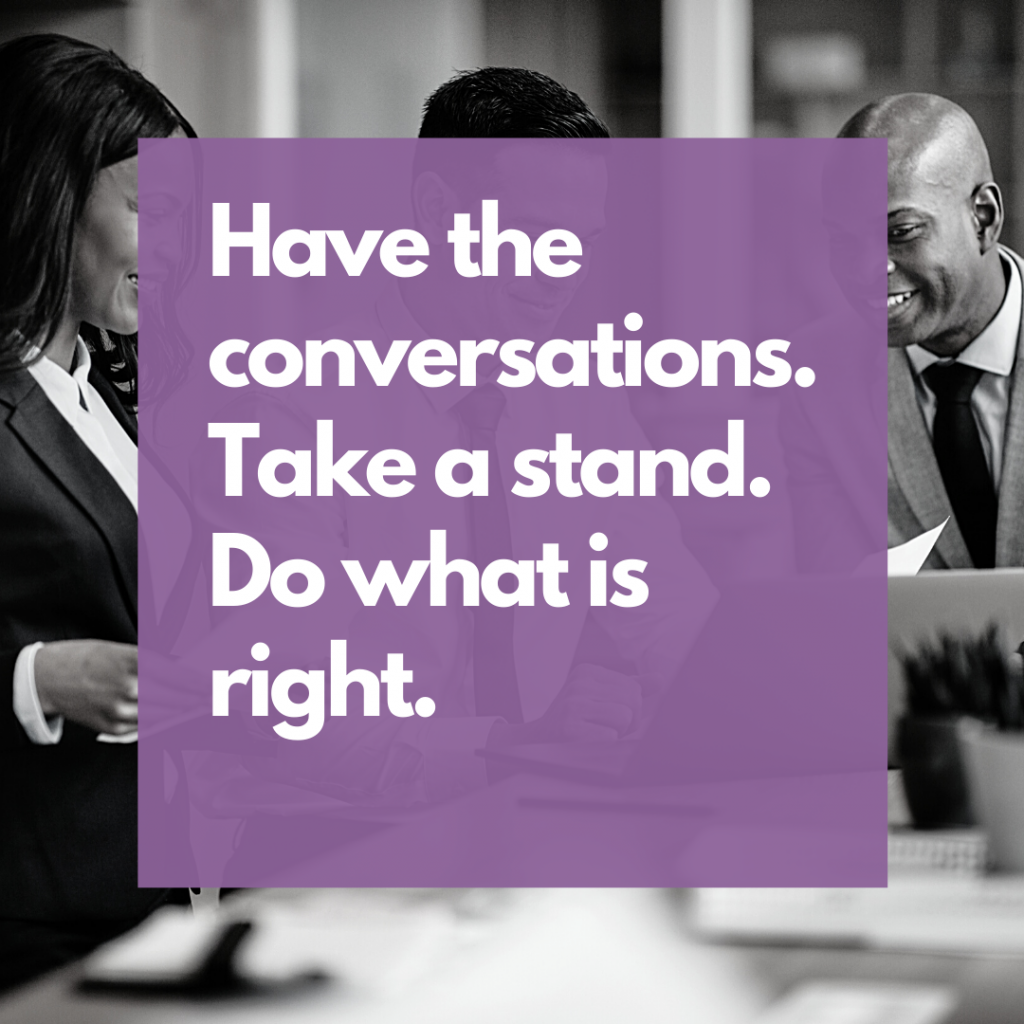While topics of racism, sexism, and other forms of prejudice and discrimination on the basis of demographic variables are not our primary focus with our clients, it is a body of work that we believe is incredibly important. It was also the primary area of focus for me when I first entered graduate school in organizational psychology. On the Gallaher Edge blog, we have already made the case for the power of Diversity in your organization in terms of how it drives business results and increases employee engagement. We’ve shared some of the steps companies can take to create Diversity. And we’ve explained how Inclusion can create diversity through honoring people for who they are. Even if you get all of these things right in your organization, you still may have to address racism at every level. That’s why Antiracism is important.
Even when organizations have hired a Chief Diversity Officer, 27% of individuals in those roles still have to make the case for Diversity, inclusion and equality in the workplace. And given the extremely disturbing history of the United States when it comes to the treatment of Black people, we want to specifically call out the importance of Diversity in your culture as a means of improving the quality of employees’ lives. We cannot imagine talking about Diversity and Inclusion without paying special attention to the topics of antiracism and egalitarianism in our society, because organizations are a part of society, they are not apart from it.
Racism: An Ugly History
In an essay written for Harvard Business Review, authors Laura Morgan Roberts and Anthony Mayo outline a compelling case for purpose-driven capitalism. After centuries of injustice and horrifying treatment of Black people, what if leaders focus less on (short-term) profit, and focus more on what is right?
It was over 400 years ago that White people in the land now known as the United States began the human trafficking of Black people. And it was only 70 years ago that Elmore Bolling was murdered for being “too successful to be a Negro,” according to a statement given to a newspaper reporting on the incident at the time. Most recently in 2020, shortly after the COVID-19 pandemic was rocking the United States to its core, we watched in horror as a White police officer, Derek Chauvin, murdered a Black man, George Floyd, in the streets of Minneapolis in broad daylight in front of dozens of witnesses while being filmed. This crystal-clear footage of a completely unjustified murder of a Black man by White police sent shockwaves through the nation and inspired more White people than ever before to support the Black Lives Matter movement.
And yet, leaders in organizations still wonder, “Should I say something?”
What Can Business Leaders Do About Racism?
If your goal is to not appear prejudiced, then you’re starting from a flawed position. This can lead you to performative allyship, or “strategic colorblindness” that prevents you from having to talk about race. Whether it is conscious or not, many managers actually fear that they lack the skills to have the difficult conversations they anticipate when talking about race and racism.
But Desmond Tutu has beautifully said: “If you are neutral in situations of injustice, you have chosen the side of the oppressor.” Research has shown that when there are major events in the press around racism in the country, how the leaders in the organization respond makes a difference. A lack of support will lead minority employees to feel that there is more interpersonal and institutional bias against them.
Imagine, for a moment, that you are telling your leader that somebody close to you has just died. And imagine that he responds “neutrally.” Perhaps he makes no comment or has a “neutral” facial expression as you share this news. Neutral is not neutral. And it is no longer ok to not speak up.
Too many leaders are allowing fear to stop them from having the conversation. They fear saying “something wrong” or they fear feeling “attacked.” But, in the words of Roberts and Ella Washington, “Remember that comments on systemic inequalities are not personal attacks.”
There are strong parallels between the resistance that comes up for leaders to talk openly about antiracism and the broader defensiveness that gets in the way of productive conversations. Now, more than ever, we want to invite all leaders, and especially White leaders, to practice self-acceptance, grow their self-awareness, and increase their self-accountability when it comes to fighting against racism and other forms of prejudice and discrimination.
Have the conversations. Take a stand. Do what is right.
Diversity Drives Antiracism
Here at Gallaher Edge, we draw out three missing links that are key to Diversity: Differences, Respect and Inclusion. If you have differences between people and each person is respectful of one another, but there is no active inclusion, people could naturally self-select out or end up being excluded from conversations or decisions. The decision to include must be active and intentional.
Because when you have all three together, the interplay is powerful and beautiful, where each person is able to show up as their full, authentic self, respect both what is similar to and different from themselves and contribute fully to the mission of the organization and to one another’s growth through intentional inclusion.
Ready to take your leadership to the next level? Get your FREE copy of my eBook, Level Up: 3 Steps to Be a Better Leader. Click here to download!


